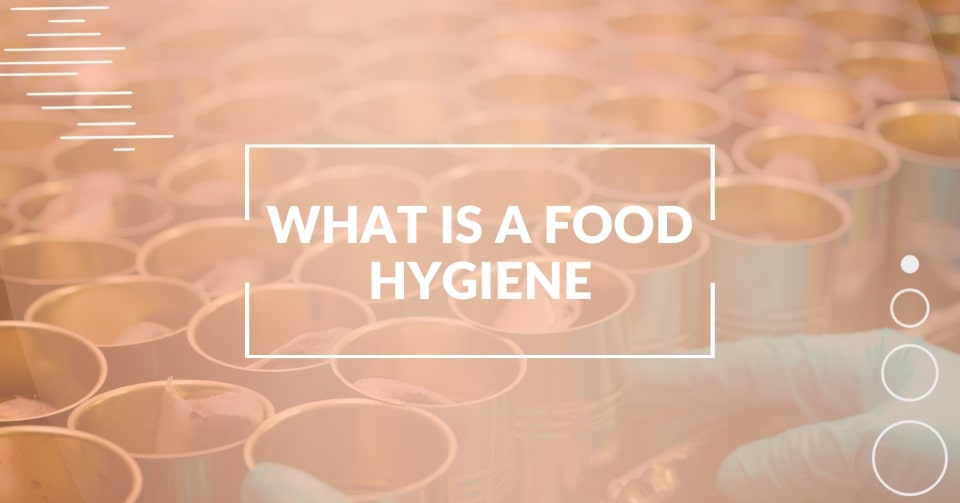If there’s one thing I’ve learned from working closely with food manufacturers across the U.S. and beyond, it’s this: food hygiene is non-negotiable.
Whether running a multi-line facility in the Midwest or a small-batch operation in California, maintaining hygiene standards isn’t just about ticking compliance boxes; it’s about protecting people, your product, and your brand.
In 2025, food hygiene is more dynamic and tech-driven than ever before. Strict regulations, rising consumer expectations, and real-time digital tools have raised the bar, and for good reason. One lapse in hygiene can lead to costly recalls, regulatory fines, and worse, it can damage hard-earned trust.
This article is my way of breaking down what food hygiene means today, from the basics we sometimes overlook to the innovations shaping the future of food safety. Whether you’re training a new team or evaluating your current systems, this guide is for you.
Let’s get into the essentials of modern food hygiene and how your facility can stay ahead, stay compliant, and most importantly, stay safe.
What Is Food Hygiene?
At its core, food hygiene refers to the practices and conditions necessary to ensure the safety of food from production to consumption. In particular, it’s about controlling hazards that could contaminate food, whether biological (like bacteria or viruses), chemical (like cleaning agents or allergens), or physical (like foreign objects).
Food hygiene starts long before food reaches a consumer’s plate. It involves every stage of the food chain from the sourcing of raw ingredients and food processing, to packaging, distribution, and food handling at the point of service. It covers everything from properly washing hands to designing workflows that actively prevent cross-contamination.
Why Is Food Hygiene Important?
Food hygiene is not just a regulatory obligation, it’s a moral one. Every year, millions of people get sick due to unsafe food. A 2024 joint report by the FAO and WHO identified human norovirus as the leading cause of foodborne illness globally, accounting for approximately 125 million cases and 35,000 deaths annually. For businesses, this isn’t just a health crisis, but a brand crisis.
From my experience working with food producers and handlers, I’ve seen that one hygiene fault can cause major operational failures, It can lead to:
- Foodborne illness outbreaks
- Costly product recalls
- Loss of certifications
- Reputational damage
- Legal liabilities
And yet, the inverse is also true: strong food hygiene builds trust, customer loyalty, and operational excellence.
What is the Difference Between Food Hygiene and Food Safety?
To clarify the distinction, here’s how food hygiene compares to food safety:
| Term | Definition | Focus |
| Food Hygiene | The preventive measures taken to ensure food is safe and uncontaminated | Cleanliness, sanitation, proper handling |
| Food Safety | The broader system ensuring food does not cause harm when prepared and consumed | Hazard analysis, risk management, traceability |
What are key food hygiene guidelines and principles for food businesses?
Food businesses are responsible for maintaining high standards of hygiene to ensure their products are safe for consumers. Core principles include:
- Personal hygiene: Staff must wash hands regularly, wear protective clothing, and stay home if unwell.
- Cross-contamination prevention: Use designated equipment and structured workflows to handle raw and cooked food separately.
- Temperature control: Store perishable food at appropriate temperatures; regularly monitor and record temperatures.
- Cleaning and sanitizing: Implement strict cleaning schedules for surfaces, tools, and equipment.
- Pest control: Maintain clean premises and monitor for signs of infestation.
- Food traceability and documentation: Keep records of suppliers, production, and cleaning logs to support accountability.
Food Hygiene in 2025: What’s Changing?
In 2025, food hygiene is becoming more data-driven, automated, and proactive. Here’s what’s reshaping the hygiene area:
- Digital Monitoring Tools: Track temperatures, humidity, and sanitation in real time using IoT sensors and monitoring tools.
- AI and Predictive Analytics: AI and advanced software analysis can help identify preventive strategies and potential risks immediately.
- Stricter Regulatory Oversight: Moreover, high accountability is considered when it comes to the updated standards like FSMA’s traceability rules and global authorities’ enhanced enforcement.
- Sustainability Integration:, Increasingly, hygiene protocols now consider environmental impacts, such as using eco-friendly cleaning agents and optimizing water usage without compromising sanitation.
- Remote Auditing: With cloud-based documentation systems, audits and inspections are increasingly conducted virtually, speeding up compliance checks.
Everyday Tips for Better Food Hygiene
Even the most advanced systems need daily best practices to be effective. Here are simple but essential habits that reinforce food hygiene every day:
- Hand Hygiene First: Train staff to wash hands thoroughly and often, especially after handling raw foods, using the restroom, or taking breaks.
- Color-Coded Tools: Use color-coded chopping boards, utensils, and cloths to prevent cross-contamination.
- Clean as You Go: Implement the “clean-as-you-go” policy in kitchens and production areas; don’t wait until the end of a shift.
- Proper Labeling: Date all food containers and use FIFO (First In, First Out) to reduce waste and spoilage.
- Dry Storage Checks: Keep dry storage areas organized, cool, and well-ventilated. Avoid storing food directly on the floor.
- Waste Management: Empty bins regularly and keep lids closed to prevent pest attraction.
FoodReady Software has all the features necessary for cleaning and maintaining hygiene, along with food safety regulatory standards and certifications for any small and large businesses and manufacturers.
Regulatory Oversight of Food Hygiene
Understanding the regulatory framework is crucial for food businesses. Here’s an overview of key regulatory bodies:
United States
- Food and Drug Administration (FDA): The FDA oversees the safety of approximately 80% of the U.S. food supply, including dairy, produce, and packaged foods.
- Food Safety Modernization Act (FSMA): Enacted in 2011, FSMA empowers the FDA to focus on preventing food safety issues rather than responding to them. It mandates hazard analysis, preventive controls, and supply chain accountability.
- Food Safety and Inspection Service (FSIS): A branch of the USDA, FSIS is responsible for ensuring the safety of meat, poultry, and egg products.
Global
- World Health Organization (WHO): WHO provides international leadership on food safety, developing global food safety strategies and guidelines.
- Codex Alimentarius Commission: Jointly established by FAO and WHO, Codex develops harmonized international food standards to protect consumer health and promote fair practices in food trade.
Common Myths About Food Hygiene
Let’s bust a few persistent myths that can put your business at risk:
“If it looks clean, it’s safe.”
Not always. Harmful microbes can be invisible. Surface sanitation and regular microbiological testing are essential.
“Hot food can sit out for hours.”
In truth, the danger zone (40°F–140°F / 4°C–60°C) is where bacteria grow rapidly. Food should be cooled or reheated quickly to avoid this.
“Gloves replace handwashing.”
Gloves can become just as contaminated as bare hands. They must be changed frequently and used with clean hands.
“One cleaning product does it all.”
Different surfaces and risks require specific sanitizers. For example, a degreaser won’t kill pathogens.
“Freezing kills bacteria.”
Freezing may stop growth, but it doesn’t kill most bacteria. Thorough cooking is what neutralizes them.
Food Hygiene Checklist
A food hygiene checklist is a practical tool that ensures all critical hygiene tasks are completed consistently and correctly. This checklist helps maintain safety, prevent contamination, and support compliance during daily operations, whether you’re running a food truck, catering business, or large-scale facility.
- Staff maintain proper hand hygiene and wear clean uniforms
- Food is stored at safe temperatures with proper labeling
- Raw and cooked foods are kept separate to prevent cross-contamination
- All surfaces and equipment are cleaned and sanitized regularly
- Daily temperature logs and cleaning records are completed
- Waste is disposed of promptly and bins are covered
- No signs of pests; regular pest control checks are conducted
Final Thoughts
Where maintaining good hygiene practices and food safety expectations are only increasing you need to be a smart business. Use this guide as a base for starting your journey to Food Hygiene and Food Safety, and remember: investing in hygiene is investing in your brand’s integrity.
If you’re looking to streamline your hygiene processes with real-time tracking, checklists, and compliance support, FoodReady’s food safety software can help you stay a step ahead.
FAQ
For most food businesses, internal hygiene audits should be conducted monthly, while external audits may occur annually or semi-annually depending on certification requirements (e.g., SQF, BRCGS, HACCP). In high-risk environments, weekly checks may be necessary.
Digital tools help automate monitoring, track cleaning logs, send real-time alerts, and document compliance. From IoT temperature sensors to cloud-based audit logs, these tools reduce human error and increase visibility across operations.
While core hygiene principles remain the same, smaller businesses may use simpler systems, whereas larger facilities require more specialized equipment, zoning, and automated monitoring to handle scale and complexity.
All food handlers should receive basic food hygiene training upon hiring and refresher sessions annually. Supervisors may need advanced HACCP or FSMA-related certifications, especially in regulated environments.
Watch for signs like:
-Increasing product rejections
-Inconsistent temperature logs
-Pest sightings
-Frequent staff illnesses
-Customer complaints about food quality
These are early warnings to revisit your hygiene protocols.
Many eco-friendly or biodegradable cleaners are certified for use in food environments. It’s important to verify they meet EPA or NSF standards and are compatible with the types of surfaces and soils in your facility.
Inadequate hygiene can introduce spoilage bacteria, accelerate decomposition, and lead to shortened shelf life, increasing food waste and loss of revenue. Clean environments support longer-lasting, higher-quality products.








